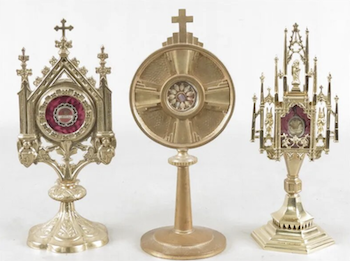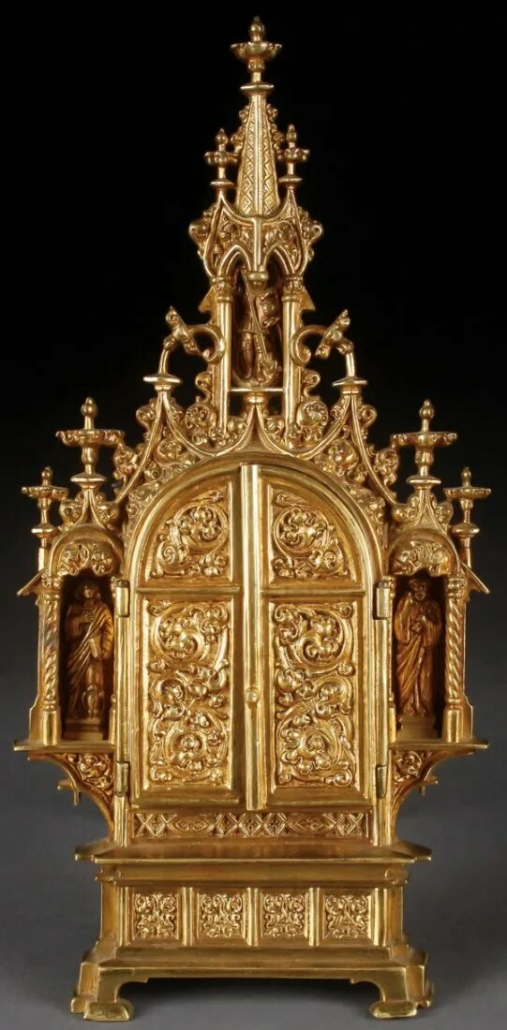
This elaborate 19th century French Gothic bronze reliquary sold for $800 plus the buyer’s premium in 2016 at Jackson’s International Auctioneers.
NEW YORK – When holy persons depart for their heavenly reward, the grieving faithful feel compelled to retain what they left behind. Clothes, tools, and other personal effects, as well as body parts, were placed in opulent caskets, boxes, and other glorified displays to keep the memory of the saint alive. Objects designed to hold sacred objects go by many names, but they are often called reliquaries in recognition of the relics they contain.
Once a saint of the early Catholic Church died, whether by crucifixion or other means, followers would dismember the body. Romans persecuted Christians, so secrecy was paramount, but veneration of the saint was important, too. The remains and personal effects of the holy individual were stored in wooden boxes or simple stone and clay ossuaries.
When Roman Emperor Constantine declared Christianity the official religion in his Edict of Milan in 313, he also decreed that every church required a saintly relic. His mother, Helena, walked the path of Jesus in 325 after the Council of Nicea, establishing churches, monasteries, and convents, doing good works, and gathering relics. Among them were bits of wood that allegedly belonged to the cross upon which Christ was crucified; a garment said to be the cloak of Jesus; nails that were believed to have been driven into his feet and hands; and thorns from the “crown.” These relics formed the basis of veneration for churches throughout the Empire.
Christianity isn’t the only religion in which relics are venerated. To a degree, Islam and Buddhism also draw upon the power of healing and spiritual connection that relics provide. And once a church, temple, stupa or mosque was favored with a relic, it was important that the precious gift be seen and experienced by the faithful in celebrations, holy days, and events of importance. Relics are displayed in different settings and formats to meet those spiritual needs.
Reliquary:
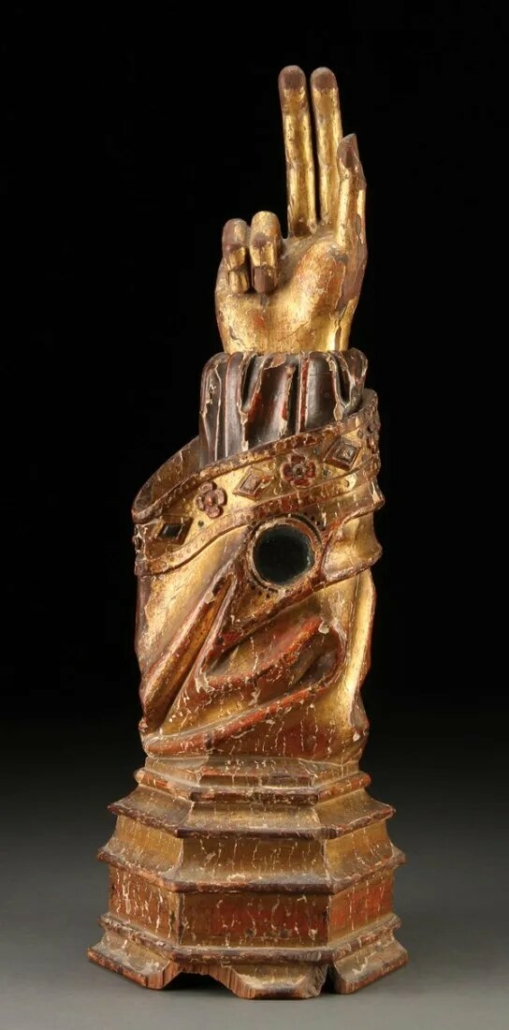
Originally, a reliquary was a wooden box with hand-painted scenes depicting the life of the saint or Bible scenes. By the Middle Ages, reliquaries became more elaborate, decorated with embossed copper, jewels, precious metals, ceramic, ivory, detailed engravings, cloisonne, or combinations of these materials. The complete body of a saint was reverently dressed and placed in a full-size casket-like reliquary fitted with clear glass sides so pilgrims and parishioners could see them. Reliquaries were also created to resemble busts, crosses, arms, legs and even skulls to match the type of relics they contained.
Monstrance:
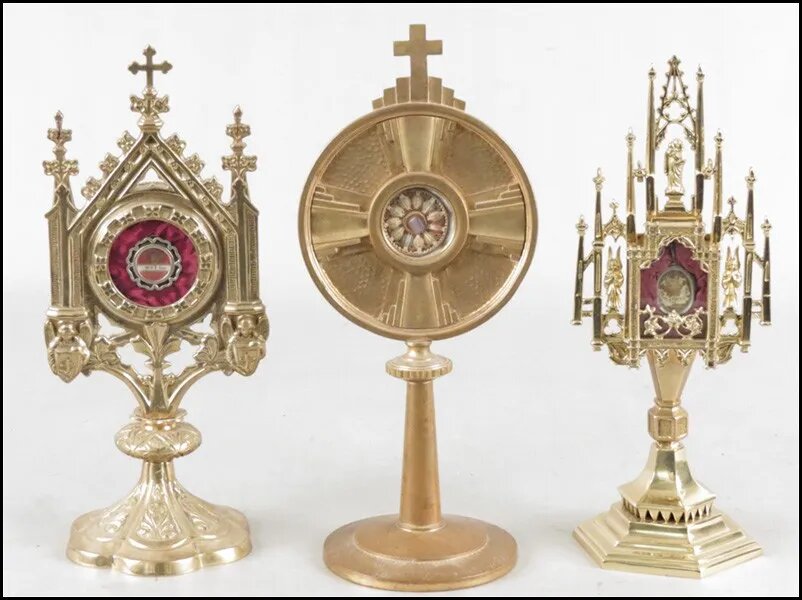
The monstrance typically plays a role in the Catholic tradition of communion; the priest holds it up to heaven and consecrates the wafer host and red wine, symbolically turning both into “the body and blood of Christ” through transubstantiation. Fashioned in gold, bronze or gilt, the monstrance is, by tradition, topped with an elaborate sunburst design and Christian cross with a clear glass window in the column displaying the relic of the saint.
Phylactery:
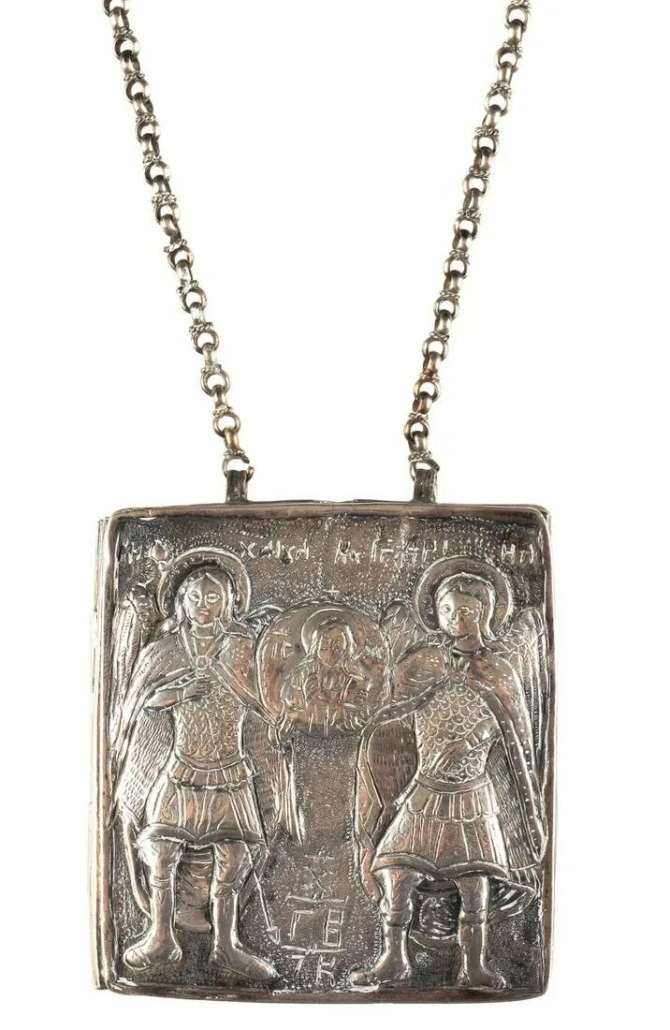
More like an amulet, the phylactery is a elaborate pendant of embossed metal depicting a life of a saint or important Biblical scene. It contains a small relic and is worn around the neck on a chain or ribbon. In the case of Jewish tefillin, the phylactery consists of a leather strap threaded through a small box with Torah passages inside that is worn on the forehead during morning prayers.
Chasse:
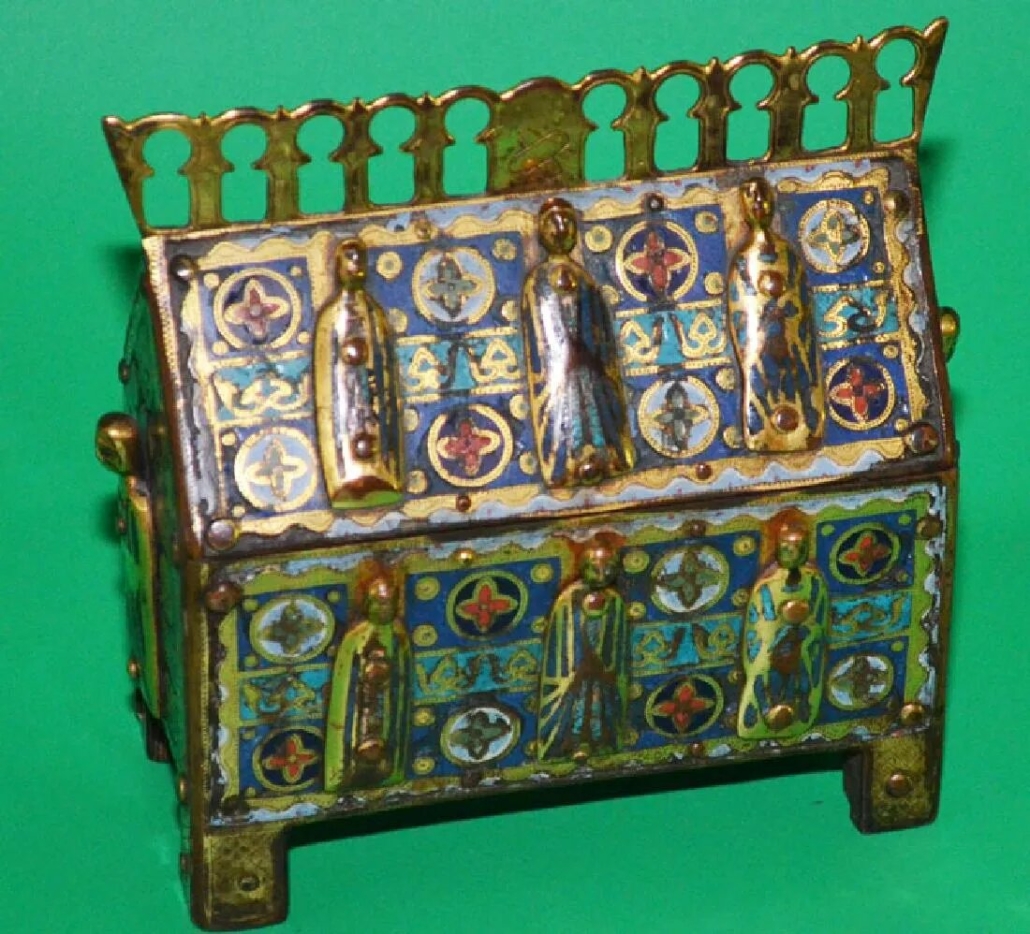
A more elaborate reliquary that resembles a medieval church, the chasse is more rectangular, with a sloping ‘roof’ design that is similar to a casket or early sarcophagus. It derives its name from a French word taken from the Latin capsa, meaning “box.” Decorative and full of church symbolism, the chasse’s entire surface is covered in metal, jewels, gilt, ceramic, enamel, ivory (the white hue indicates holiness) or just elaborately carved wood or ivory panels sitting on four separate legs.
Pagodas and Stupas:
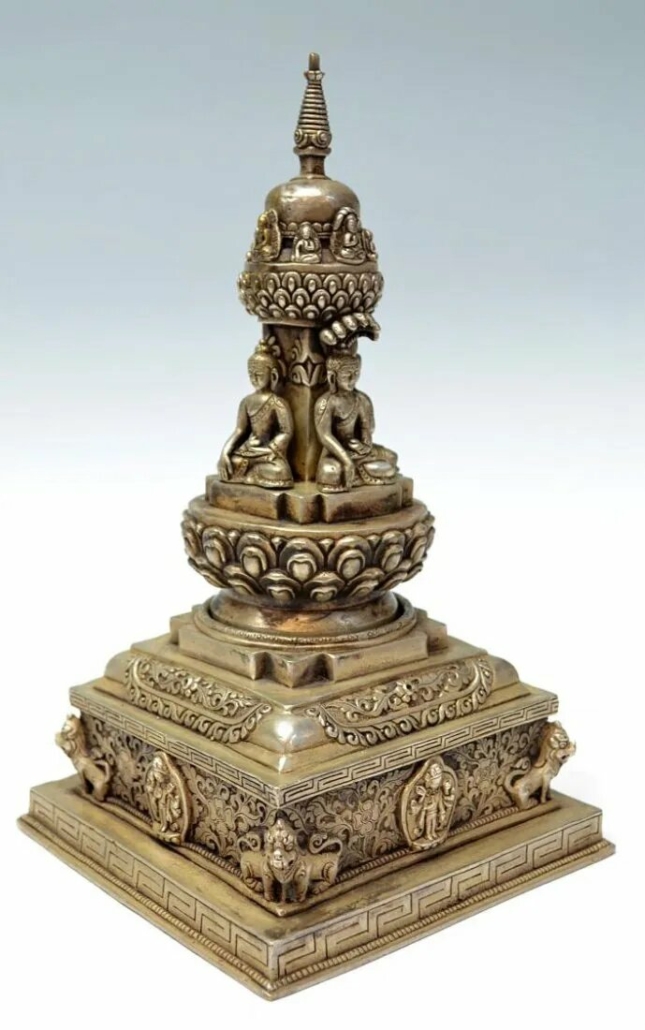
Eastern reliquaries are found in buildings expressly designed around the relics, whereas Christian churches are built for worship first. The pagoda form of architectural reliquary is a multi-tiered tower found in China, Japan and throughout Asia, while the stupa is more of a mound shaped design with similarities to a seated Buddha, and is found in India, Tibet and throughout the Indus Valley. Artisans create small versions of pagodas and stupas from bronze or other metal and, at times, surmount them with precious stones and hammered religious images with a relic prominently placed inside.
Royal Reliquaries:
While it is true that reliquaries were intended to venerate a saintly individual and encourage the pious to follow their example by feeling a connection to their physical relic, it was also true that kings, emperors and those of higher society might have their hearts interred separately, away from the main body after death, sometimes in an elaborate reliquary and at other times in a simple urn. The curious Middle Ages practice allowed for an official burial of sorts to occur if the full body was too difficult to transport. Reliquaries containing hearts are not usually found at auction, except as a commemorative chasse or other reliquary form.
Ways to Collect:
Catholic canon law forbids the buying and selling of physical remains as relics, but does allow the reliquaries to be sold as long as the relic, if there is one, is considered a gift. Relics that are removed from the saint are regarded as first-class relics. Each has to be vetted and approved by the church with a properly signed certificate that accompanies the reliquary.
Relics such as personal clothing, stones a saint might have stepped on, pieces of wood they touched, soil or water from the place where a miracle occurred, or an item a saint might have personally handled are considered second-class relics. Ordinary items, such as a piece of cloth, that touch a first-class relic rank as third-class relics. Auction records should clarify which class of relic is being offered.
The history, personal story of the saint, or the design and workmanship of the reliquary can attract interest at auction whether or not a relic is included. Still, a specialist should authenticate the reliquary by examining its construction overall, paying attention to whether metals are forged, how wooden boxes are joined, how decorations are attached, and whether the ceramics, precious stones and elaborate metalwork match the craftsmanship of the period.
Whether collecting for the relic or for the art form, the spiritual connection experienced through viewing a reliquary can amplify and strengthen faith. Perhaps that qualifies as a miracle.
# # #


